 I am inclined to think Jesus never existed. I have doubted that, ever since I had my dream—that dream off Crete. Indian and Egyptian ideas met at Alexandria, and went forth to the world, tinctured with Judaism and Hellenism, as Christianity. – Swami Vivekananda
I am inclined to think Jesus never existed. I have doubted that, ever since I had my dream—that dream off Crete. Indian and Egyptian ideas met at Alexandria, and went forth to the world, tinctured with Judaism and Hellenism, as Christianity. – Swami Vivekananda
Our Master had been talking of Christian ritual as derived from Buddhist, but one of the party would have none of the theory.
“Where did Buddhist ritual itself come from?” She asked.
“From Vedic,” answered the Swami briefly.
“Or as it was present also in southern Europe, is it not better to suppose a common origin for it, and the Christian, and the Vedic rituals?”
“No! No!” he replied. “You forget that Buddhism was entirely within Hinduism! Even caste was not attacked, it was not yet crystallised, of course! And Buddha merely tried to restore the ideal. He who attains to God in this life, says Manu, is the Brahmin. Buddha would have had it so, if he could.”
“But how are Vedic and Christian ritual connected?” persisted his opponent. “How could they be the same? You have nothing even corresponding to the central rite of our worship!”
“Why yes!” said the Swami, “Vedic ritual has its Mass, the offering of food to God, your Blessed Sacrament, our prasadam. Only it is offered sitting, not kneeling, as is common in hot countries. They kneel in Tibet. Then, too, Vedic ritual has its lights, incense, and music.”
“But,” was the somewhat ungracious argument, “has it any common prayer?”
Objections urged in this way always elicited some bold paradox which contained a new and unthought-of generalisation.
He flashed down on the question.
 “No! And neither had Christianity! That is pure Protestantism and Protestantism took it from the Mohammedans, perhaps through Moorish influence!
“No! And neither had Christianity! That is pure Protestantism and Protestantism took it from the Mohammedans, perhaps through Moorish influence!
“Mohammedanism is the only religion that has completely broken down the idea of the priest. The leader of prayer stands with his back to the people, and only the reading of the Koran may take place from the pulpit. Protestantism is an approach to this.
“Even the tonsure existed in India, in the shaven head. I have seen a picture of Justinian receiving the Law from two monks, in which the monks’ heads are entirely shaven. The monk and nun both existed, in pre-Buddhist Hinduism. Europe gets her orders from the Thebaid.”
“At that rate, then, you accept Catholic ritual as Aryan!
“Yes almost all Christianity is Aryan, I believe. I am inclined to think Christ never existed. I have doubted that, ever since I had my dream—that dream off Crete.* Indian and Egyptian ideas met at Alexandria, and went forth to the world, tinctured with Judaism and Hellenism, as Christianity.
“The Acts and Epistles, you know, are older than the Gospels, and St. John is spurious. The only figure we can be sure of is St. Paul, and he was not an eye-witness, and according to his own showing was capable of Jesuitry “by all means save souls” isn’t it?
No! Buddha and Mohammed, alone amongst religious teachers, stand out with historic distinctness, having been fortunate enough to have, while they were living, enemies as well as friends. Krishna I doubt; a yogi, and a shepherd, and a great king, have all been amalgamated in one beautiful figure, holding the Gita in his hand.
“Renan’s life of Jesus is mere froth. It does not touch Strauss, the real antiquarian. Two things stand out as personal living touches in the life of Christ, the woman taken in adultery, the most beautiful story in literature, and the woman at the well. How strangely true is this last, to Indian life! A woman, coming to draw water, finds, seated at the well-side, a yellow-clad monk. He asks her for water. Then He teaches her, and does a little mind-reading and so on. Only in an Indian story, when she  went to call the villagers, to look and listen, the monk would have taken his chance, and fled to the forest!
went to call the villagers, to look and listen, the monk would have taken his chance, and fled to the forest!
“On the whole, I think old Rabbi Hillel is responsible for the teachings of Jesus, and an obscure Jewish sect of Nazarenes, a sect of great antiquity suddenly galvanised by St. Paul, furnished the mythic personality, as a centre of worship.
“The Resurrection, of course, is simply spring-cremation. Only the rich Greeks and Romans had had cremation any way, and the new sun-myth would only stop it amongst the few.”
Reference
* In travelling from Naples to Port Said, on his way back to India, in January 1897, the Swami had a dream of an old and bearded man, who appeared before him, saying “This is the island of Crete,” and showing him a place in the island, that he might afterwards identify. The vision went to say that the religion of Christianity had originated in the island of Crete and in connection with this gave him two European words, one of which was Therapeutae which it declared, were derived from Sanskrit. Therapeutae meant sons (from the Sanskrit putra) of the Theras, or Buddhist monks. From this the Swami was to understand that Christianity had originated in a Buddhist mission. The old man added “The proofs are all here,” pointing to the ground. “Dig and you will see!”
As he awoke, feeling that this was no common dream, the Swami rose, and tumbled out on deck. Here he met an officer, turning in from his watch. “What o’clock is it?, said the Swami. “Midnight!” was the answer. “Where are we?” he then said; when, to his astonishment, the answer came back “fifty miles off Crete!”
Our Master used to laugh at himself for the strength of the impression that this dream had made on him. But he could never shake it off. The fact that the second of the two etymologies has been lost is deeply to be regretted. The Swami had to say that before he had had this dream, it had never occurred to him to doubt that the personality of Christ was strictly historic. We must remember, however, that according to Hindu philosophy, it is the completeness of an idea that is important, and not the question of its historical authenticity. The Swami once asked Sri Ramakrishna, when he was a boy, about this very matter. “Don’t you think!” answered his Guru, “that those who could invent such things were themselves that?” – Extracted from Chapter 8 of Notes of Some Wanderings with Swami Vivekananda by Sister Nivedita
Filed under: india, world | Tagged: buddhism and christianity, christian mythology, jesus christ, sister nivedita, swami vivekananda |


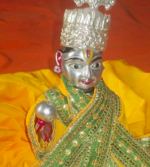






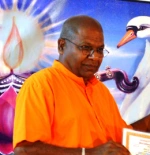

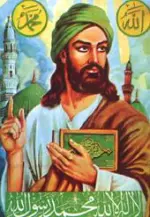




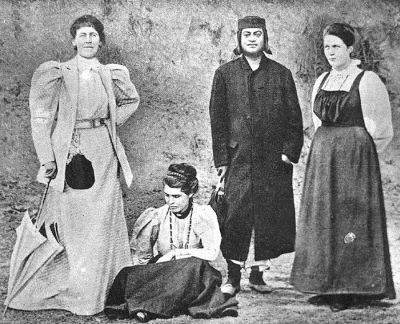

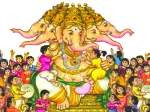



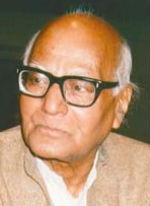






The Christian Eucharist is a cannibalistic rite and cannot be equated with Hindu prasad—SV’s simplistic universalism misled him into making the comparison. For Orthodox and Catholics Christians the bread and wine in the ritual is magically transubstantiated into the real flesh and real blood of Jesus, which the faithful then consume in order to partake of his ‘divine’ nature.
Since Swami Vivekanand’s time better studies of the life of Jesus have been made than those of Renan and Strauss. The result is that a belief in a historical Jesus vanishes and the Jesus of the New Testament stories is revealed to be a composite literary character that the NT authors and editors could have modelled on Buddha or a Jain Tirthankara. Buddhist bhikkhus and Hindu sadhus and pundits had been in the area of Alexandria since Alexander’s time (4th century BCE).
Most Christians are not aware that the first complete Bibles, some 20 in number compiled and edited by Emperor Constantine’s bishops in 327 CE, after the First Nicene Council where Jesus was made into a god by a vote of the delegates, incorporated many Buddhist ideals (though it deviated from these when Jesus is made to threaten those who do not follow him with eternal damnation).
As Mark Twain said, the Bible has some good morals, a lot of obscenity, and upward of a thousand lies.
LikeLike
Reblogged this on HINDUISM AND SANATAN DHARMA and commented:
One Abraham with two sons 1759 yrs ago and started mayhem of conversion, satanism. Visit http://www.decodinghinduism.com to see in detail about future prediction of sbrahamic religion – Kalki puran.
LikeLike
Reblogged this on Voices and Visions.
LikeLike